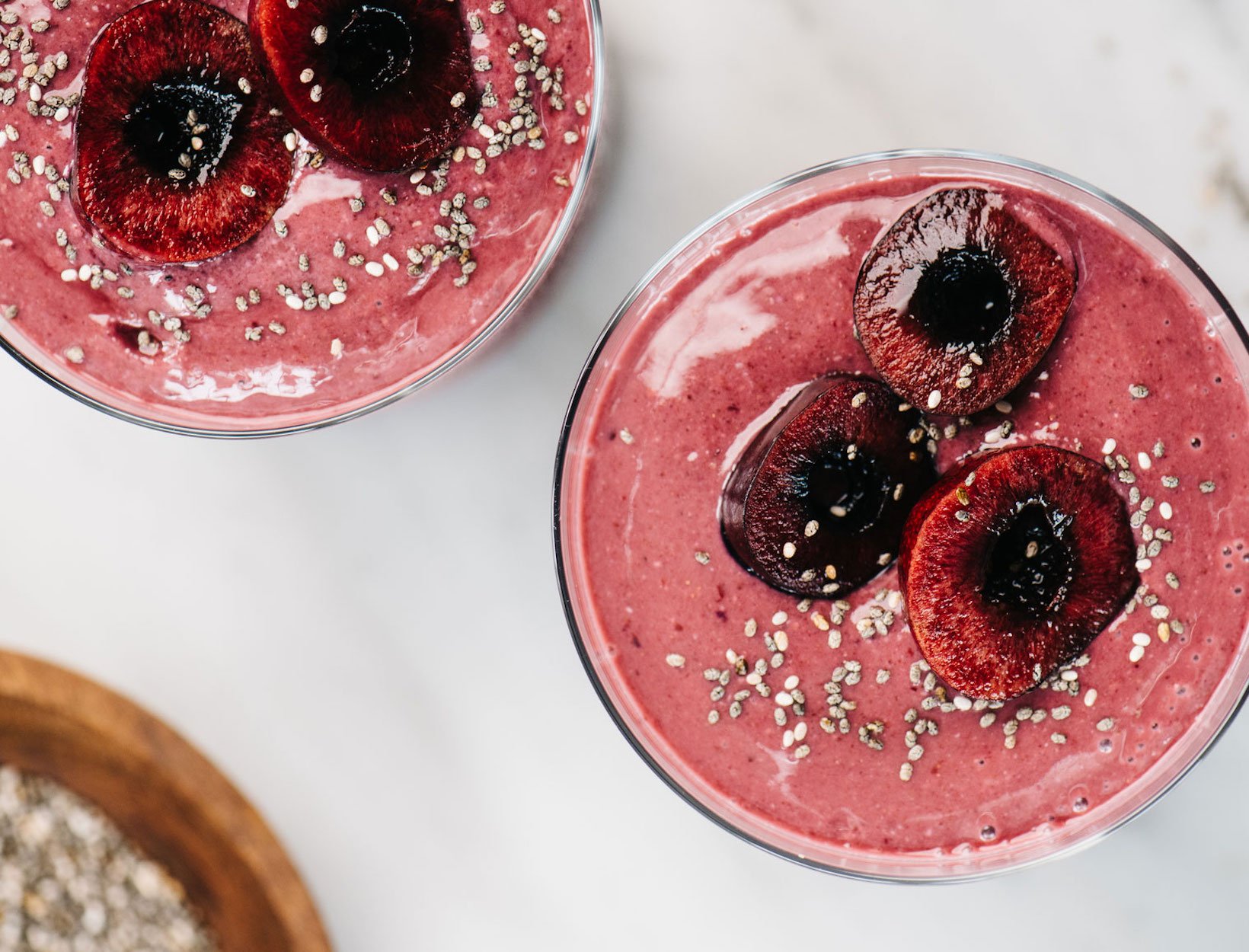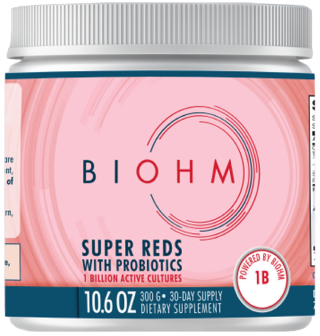Supporting Your Mycobiome, Microbiome, and Digestive Health | Goop


Supported by Science
Supporting Your Mycobiome, Microbiome, and Digestive Health
Supporting Your Mycobiome,
Microbiome, and Digestive Health
In partnership with our friends at BIOHM

Mahmoud Ghannoum, PhD, is the scientist who named the mycobiome, the community of fungi that together with bacteria, viruses, and other organisms makes up our microbiome. He has evidence that fungi and bacteria working together may be responsible for the creation of persistent biofilm—he calls it digestive plaque—that harbors undesirable microbes in the gut. And he has research-based suggestions for how to nourish beneficial fungi and bacteria in order to promote digestive health.
Ghannoum is a professor and the director of the Center for Medical Mycology at Case Western Reserve University. He and his son Afif Ghannoum cofounded BIOHM, a research- and data-driven company that can provide a sophisticated analysis of your gut microbiome, including fungi. Their team also makes products to support healthy gut microflora and, ultimately, overall health.
A Q&A with Mahmoud Ghannoum, PhD
The mycobiome refers to the community of fungi that lives on our skin, in our gut and mouth, and all over our body. Mycology is the study of fungi. We wanted to differentiate it from the bacteriome, which refers to the bacterial community.
Candida is very important. People think about Candida because of oral thrush in babies. And when we use broad-spectrum antibiotics, such as tetracycline, they kill the good bacteria in our gut that keeps Candida under control. That gives Candida the opportunity to grow and cause trouble. Everyone is afraid of Candida, but Candida is present in nearly 70 percent of people. It is a normal part of the flora. The only time it causes disease is when it overgrows. In fact, when Candida is present at a low level, it is beneficial. It helps break down food, which can feed good bacteria.
S. cerevisiae, which we use in baking bread and in beer, is a good yeast. We did a study in Crohn’s disease patients, and we found that they have a low level of S. cerevisiae, whereas in healthy people, it is present at a high level. That’s why I would consider S. cerevisiae a beneficial organism. In our BIOHM probiotic blend, we have included Saccharomyces boulardii, which is a substrain of S. cerevisiae.
We’ve formulated capsule and powder products containing our probiotic blend. We’re excited to have come out with something that is not a capsule because some people don’t like to take capsules. In addition to S. boulardii, BIOHM’s Super Reds powder contains the probiotics Bifidobacterium breve, Lactobacillus acidophilus, and Lactobacillus rhamnosus. It also includes prebiotics, pomegranate and other red fruits and vegetables, mushrooms, and amylase, a digestive enzyme. It is vegan.
If you have an imbalance in, for example, Candida, you may have pain, gastrointestinal issues, and allergic reactions.
There are a couple of ways you can determine that. At BIOHM, we developed a quiz based on our research that you can find at guttesting.com. We collected stool samples from thousands of people, and we looked at the microbiome as well as metadata, which tells us about people’s diet, exercise, health conditions, and use of antibiotics or other medications. We found that there are tell-tale signs from the metadata that you may have Candida or imbalances in your microbiome in general.
So that’s one way to do it, to take the quick test at guttesting.com, and that could give you an indication whether your microbiome is likely imbalanced or not. If you want to know more certainly whether you have an imbalance, you can send in a stool sample for the BIOHM gut test. That will tell you what bacteria and fungi are there and whether or not they are at the right levels. We compare your profile with our data from thousands of healthy people. If people were on antibiotics or had any disease, we excluded them. Healthy people defined the normal balance.
We have our nutritionist look at the report, and based on that, we provide recommendations for diet, lifestyle, and nutritional supplements, including probiotics and prebiotics. You can share your report with your doctor and discuss with them any proposed lifestyle and supplement recommendations.
Number one, at the top of the list, is the diet. The Western diet has elements that can encourage the growth of bacteria that are pro-inflammatory. For example, people who eat a lot of refined sugar tend to have Candida. A vegetarian diet can be healthy but may contain a lot of sugar. The other important thing is to eat enough fiber. We don’t break it down. It goes to the large intestine, and then the beneficial microbes such as Lactobacilli and Bifidobacteria break it down and produce small compounds, for example, short-chain fatty acids, that can help our immunity and the communication between our gut and brain. Complex carbohydrates are also important for gut health, for example from potatoes and bananas, particularly unripe bananas.
I think it’s fine if you have three glasses a week of red wine, because it’s been shown to have benefits. But excess alcohol definitely can affect our mycobiome and reduce its diversity.
We did a study to show how it changes the balance of the microbiome. We’ve presented the data at the American Society for Microbiology ASM Microbe meeting, and now we are writing the paper. We had people take a stool sample at baseline and then a stool sample after four weeks of taking the BIOHM probiotic capsule. We analyzed the microbiome at baseline and compared it at the end of the four weeks. We found that there was an increase in beneficial microbes such as Bifidobacterium. We saw a decrease in Candida and the bacterial Firmicutes phylum. So the probiotic improved the makeup of the microbiome. And now we are going to do a study to see how it affects gastrointestinal issues.
Sometimes when you start something new, you don’t know whether you are going to help people or not. To my delight, a number of people have come up to me at meetings and said that supporting their mycobiome has changed their lives. It is a pleasure to hear this.
Scientist Mahmoud Ghannoum, PhD, an NIH-funded researcher since 1993, has spent his career studying fungi in the body and their impact on gut—and overall—health. Ghannoum is a tenured professor and the director of the Center for Medical Mycology at Case Western Reserve University and University Hospitals Medical Center. He is also a cofounder of BIOHM, a company that carries out basic research on the human microbiome and has developed products to assess and support gut health.
This article is for informational purposes only. It is not, nor is it intended to be, a substitute for professional medical advice, diagnosis, or treatment and should never be relied upon for specific medical advice. To the extent that this article features the advice of physicians or medical practitioners, the views expressed are the views of the cited expert and do not necessarily represent the views of goop.
This article was originally published by goop.com. Read the original article here.





